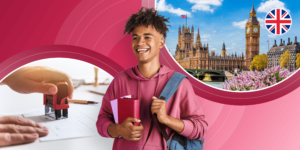Whether it’s due to financial reasons, unclear or missing documents, or academic performance, there are many reasons a Canadian study permit (commonly called a student visa) can be rejected. One of the most common reasons for a student visa to be rejected is due to “dual intent”.
But what does that mean?
Dual intent refers to the intention to come to Canada for both temporary and permanent residence. When student visas are rejected for this reason, it’s typically because the visa officer reviewing the application isn’t satisfied that the applicant plans to leave Canada at the end of their studies.
For this reason, it’s especially important for students to make it clear in their Statement of Purpose, and to the officer, that they plan to return home upon finishing their studies.
Keep reading for tips to ensure your visa won’t be rejected due to dual intent!
Want to learn about five common reasons why Canadian student visas get rejected? Check out our blog!

Work on Your SOP
A Statement of Purpose, or SOP, is a way to introduce yourself to your institution and visa officer. This personal essay tells your visa officer who you are, and why you’ll be a positive addition to the program you’re applying to.
When writing your SOP, be sure to emphasize returning home after graduation. Avoid discussing plans you have to stay in Canada after completing your program. Doing so goes against visa rules and regulations, and can lead to your study permit being rejected.
Some other things to include in your SOP include experience in extracurricular activities, accomplishments, and challenges you’ve overcome.
Note: Many students may want to address dual intent directly by mentioning their desire to become a future permanent resident of the country. However, for the best chances of having your visa accepted, it’s best to avoid the topic entirely. Focus fully on your interest in studying in Canada.
Find our how-to guide on writing a Statement of Purpose for Canada in our blog!

Get Your Documents in Order
When providing documents for your student visa submission, be sure not to forget anything. Some important documents to include are:
- Letter of acceptance (LOA)
- Proof of identity
- Proof of financial support
- Travel history
- Other personal documents (birth certificate, biometrics, etc.)
It’s always a good idea to provide documents showing your intent to return to your home country, to prove that you don’t plan to stay in Canada after the study permit expires.
When organizing your documents, it’s also important to include proof in your supporting documentation. For example, your medical or employment records can explain any gaps in your educational or work history.
For a common checklist of things to do before applying for a Canadian student visa, see our blog.

Elaborate on Previous History
Talk about your previous travel history in your SOP, and with your immigration officer once you land in the airport. Go into detail about your trips, and your reasons for travel, and make it clear that you always returned home.
If you’ve already travelled to Canada in the past, be wary of talking about your existing ties and connections. Having these connections might make you feel more comfortable during your time there as a student, and could be a potential support if you do get the opportunity to move to Canada one day. However, it could cause visa officials to believe there may be a reason for you to overstay after your studies.
Tip: If you haven’t travelled yet, now can be a good opportunity to book a trip somewhere abroad! Doing so shows proof that you’ve travelled to different countries and have a history of returning home.
In our blog, we’ve outlined some do’s and don’ts of applying for a Canadian student visa.

Interview Tips
Having an interview with an immigration officer once you’ve landed in Canada can be nerve-wracking, but you can beat these nerves with enough research and practice. It helps to be able to answer specific questions about your program and anticipate questions ahead of time. Some common questions include:
- “Why did you choose to study in Canada instead of working in your home country?”
- “What made you choose x program at x school?”
- “How are you funding yourself while studying abroad?”
- “Are you planning to return to your home country after your studies?” (To which the answer should always be “yes”!)
Keeping these questions in mind, it can help to think about:
- Why you chose your specific program and institution, and how it will help you get a job in your home country
- The improved job opportunities you can get after studying abroad, and companies you can apply to
Tip: Researchers find that non-verbal cues like tone and body language can impact over half of a conversation. Remember to make appropriate eye contact, and stay calm and collected.
Preparing for your Canadian Student Visa interview? Read our tips here!
_____________________________________________________________________________________
At the end of the day, to avoid any risk of being flagged for dual intent, it’s important to emphasize returning home after studying through your SOP, documents, travel history, and interview. Whether you’ve been previously rejected or are newly applying, these tips can help bring you one step closer to your study abroad dreams!
If you’re ready to start your journey studying abroad, register for free with ApplyBoard. We’re here to help!



